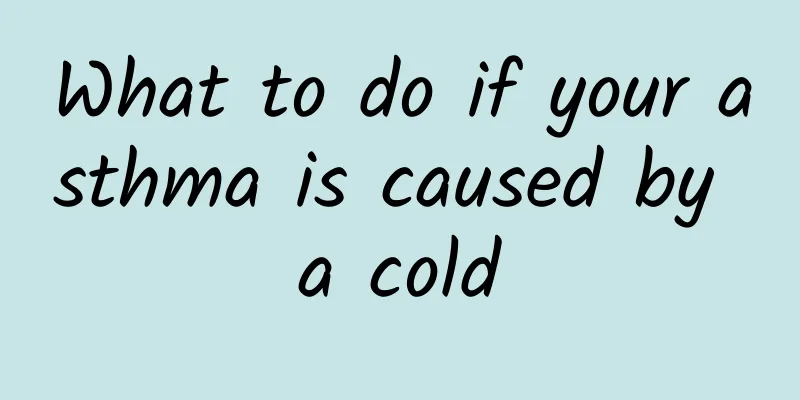What to do if you have rhinitis and upper jaw pain

|
For those patients with rhinitis, they will feel very uncomfortable, because not only will it affect their breathing, but also patients with rhinitis will often have a runny nose, which can also make people feel very distressed. When rhinitis occurs, the upper palate may also be affected, and palate pain may occur. What should I do if I have palate pain due to rhinitis? It is necessary for people to find the correct solution so that this problem can be solved well. rhinitis Causes 1. Viral infection Viral infection is the primary cause, or bacterial infection is secondary to viral infection. More than 100 viruses are known to cause this disease, the most common of which is rhinovirus, followed by influenza and parainfluenza viruses, adenovirus, coronavirus, coxsackievirus, and myxovirus and paramyxovirus. The virus is mainly transmitted through inhalation through the respiratory tract, and secondly through entering the body through contaminated objects or food. 2. Genetic factors People with a family history of allergies are more likely to develop this disease. Most family members of the patients have a history of asthma, urticaria or drug allergy. In the past, such patients were called atopic individuals, whose ability to produce IgE antibodies was higher than that of normal people. However, in recent years, some people have found that there is no significant difference in the incidence rate between twins and the general population. 3. Susceptibility of nasal mucosa Susceptibility arises from frequent stimulation by antigenic substances, but the degree of susceptibility depends on the number of mast cells and alkaliphils in the nasal mucosal tissue and the ability to release chemical mediators. It has been confirmed that the number of the above-mentioned cells in the nasal mucosa of patients with allergic rhinitis is not only higher than that of normal people, but also has a stronger ability to release chemical mediators. 4. Antigenic substances Antigen substances that stimulate the body to produce IgE antibodies are called allergens. When the allergen enters the nasal mucosa again, it combines with the corresponding IgE and causes an allergic reaction. The allergens that cause this disease are divided into two categories according to the way they enter the human body: inhalation and food. (1) Inhaled allergens ① Pollen: Not all plant pollens can cause disease. Only those pollens with large pollen quantities, wide vegetation areas, strong allergenicity, and spread by wind are most likely to become allergens. Due to differences in vegetation species, the allergenic pollen in different regions is also different. ②Fungi are widely distributed in nature, mainly existing in soil and decayed organic matter. Both its hyphae and spores are allergenic, but the spores are more allergenic. ③House dust mites belong to the class Arthropoda. The size of adults is generally 300 to 500 μm. It mainly parasitizes in various corners of the room, with the most being in the dust on mattresses, pillows, sofa cushions, etc. The excrement, eggs, desquamation and broken body parts of mites can all become allergens. ④Animal dander Animal dander is one of the strongest allergens. For susceptible individuals, long-term contact with relevant animals may cause sensitization. After sensitization, further contact with even a small amount of dandruff can trigger nasal symptoms. ⑤Indoor dust is one of the common allergens that cause perennial rhinitis. (2) Ingestible allergens refer to allergens that enter the human body through the digestive tract and cause nasal symptoms. The way in which it acts on the nasal mucosa is very complex and is still not fully understood. Milk, eggs, fish, shrimp, meat, fruit, and even some vegetables can become allergens. Clinical manifestations 1. Symptoms (1) Nasal congestion Nasal congestion is characterized by intermittent nature. Nasal congestion is relieved during the day, in hot weather, while working or exercising, but is aggravated at night, when sitting still or in cold weather. Another characteristic of nasal congestion is its alternation. When lying on your side, the lower nasal cavity is blocked, but the upper nasal cavity is well ventilated. Due to nasal congestion, there may be occasional symptoms such as decreased sense of smell, headache, dizziness, and nasal speech. (2) Excessive discharge is often mucous or mucopurulent, and occasionally purulent. Purulence often occurs after secondary infection. (3) Decreased sense of smell is mostly caused by two reasons: one is swelling of the nasal mucosa and nasal congestion, which prevents airflow from entering the olfactory area; the other is that the olfactory mucosa is stimulated by chronic inflammation for a long time, resulting in a decrease or disappearance of the olfactory function. (4) Headache and dizziness Chronic sinusitis is often manifested by a feeling of heaviness in the head. (5) Systemic symptoms: Most people also experience headaches, loss of appetite, fatigue, memory loss, and insomnia. 2. Types of rhinitis There are many kinds of rhinitis symptoms, depending on the type of rhinitis, the symptoms of rhinitis are also different: (1) Chronic rhinitis causes long-term intermittent or alternating nasal congestion, leading to dizziness and headache, which seriously affects sleep, work and study. Mucopurulent nasal discharge often flows back into the pharynx, causing cough and excessive sputum. (2) Acute rhinitis ① Initial stage: 1 to 2 days. Patients often experience general discomfort, chills, fever, loss of appetite, headache, etc. Dryness and burning sensation in the nasal cavity and nasopharynx, itching in the nose, and frequent sneezing. ②The acute phase lasts 2 to 5 days. Existing symptoms worsen. The body temperature of adults is around 38 degrees, while that of children is as high as over 39 degrees. Vomiting, diarrhea, coma and even convulsions often occur due to high fever. (3) Drug-induced rhinitis: Long-term use of various rhinitis drugs or lasers or surgeries that damage the nasal mucosa can lead to persistent nasal congestion and frequent nosebleeds. (4) Atrophic rhinitis causes foul-smelling breath and nasal secretions in the form of lumps and tubular pus crusts that are difficult to blow out. When dry crusts are picked out with force, there is a small amount of nose bleeding. It is often mistaken for rhinitis in the early stages of a cold. When the weather turns cold, some patients sneeze and have a runny nose continuously after getting up in the morning. When the temperature difference is large, their nose is blocked. They mistakenly think they have a cold and take some cold medicine casually, which makes their condition worse. complication 1. Acute sinusitis Nasal inflammation spreads into the sinuses through the sinus openings, causing acute purulent sinusitis, among which maxillary sinusitis and ethmoid sinusitis are the most common. 2. Acute otitis media The infection spreads to the middle ear through the Eustachian tube. 3. Acute pharyngitis, laryngitis, tracheitis and bronchitis It is caused by the spread of infection downward through the nasopharynx. Children, the elderly and those with low immunity may also develop pneumonia. 4. Vestibulitis The infection spreads directly forward. 5. Other infections It may spread through the nasolacrimal duct and cause eye complications such as conjunctivitis and dacryocystitis. treat 1. Treatment of the cause Identify systemic and local causes, and promptly treat systemic chronic diseases, sinusitis, adjacent infected lesions, and deviated nasal septum. Improve living and working environment, exercise, and enhance body resistance. 2. Local treatment (1) Intranasal glucocorticoids are the first choice for chronic rhinitis, with good anti-inflammatory effects and ultimately a decongestive effect. It can be used for a longer period of time as needed, with good efficacy and safety. (2) Nasal cleaning: For those with more or thicker nasal secretions, the nasal cavity can be cleaned with normal saline to remove nasal secretions and improve nasal ventilation. (3) Oxymetazoline hydrochloride spray can be used as an intranasal decongestant, and continuous use should not exceed 7 days. If you need to continue using it, you need to stop for 3 to 5 days. Long-term use of 0.5% to 1% ephedrine nasal drops can damage the ciliary structure of the nasal mucosa and should be avoided as much as possible. If it is necessary to use it, use it in small amounts intermittently. The use of nasal drops is prohibited because it has been shown to cause drug-induced rhinitis. (4) Other treatments include blockade therapy, acupuncture therapy, etc., which are rarely used. |
<<: Why is the roof of your mouth itchy?
>>: Ointment for treating urticaria_What are the ointments for treating urticaria
Recommend
Symptoms of neuralgic headaches
Neural headache is a very common headache. This t...
Heart aortic valve replacement
Aortic valve replacement is actually aortic valve...
Side effects of hemangioma injections
The disease of hemangioma mainly refers to the bl...
The role of nutmeg in seasoning
Nutmeg can be used in seasonings mainly to remove...
Introduction to Prolactin-secreting Pituitary Tumors
I believe that many female friends do not know mu...
Treat metrorrhagia and stop bleeding immediately
The harm of metrorrhagia in women is relatively l...
What should I do if I have large pores and blackheads on my face?
Large pores and blackheads on the face will have ...
What is Saffron
Saffron is a special plant that can also be used ...
What foods should you avoid if you are allergic? You must stay away from these
The change of seasons is the peak period for skin...
Will chronic vaginitis affect pregnancy?
When a woman suffers from acute vaginitis, she mu...
Oily ears with body odor
Nowadays, many people have oily ears. A few days ...
Symptoms and treatment of spleen and stomach deficiency fire
When we have spleen and stomach deficiency fire, ...
Should I cover myself with a blanket when I have a fever in summer?
Whether or not to cover yourself with a blanket w...
How to eat wild asparagus
Asparagus is very common to everyone. It is a kin...
What are the effects and functions of plantain?
In fact, everyone has often heard of plantain bec...









